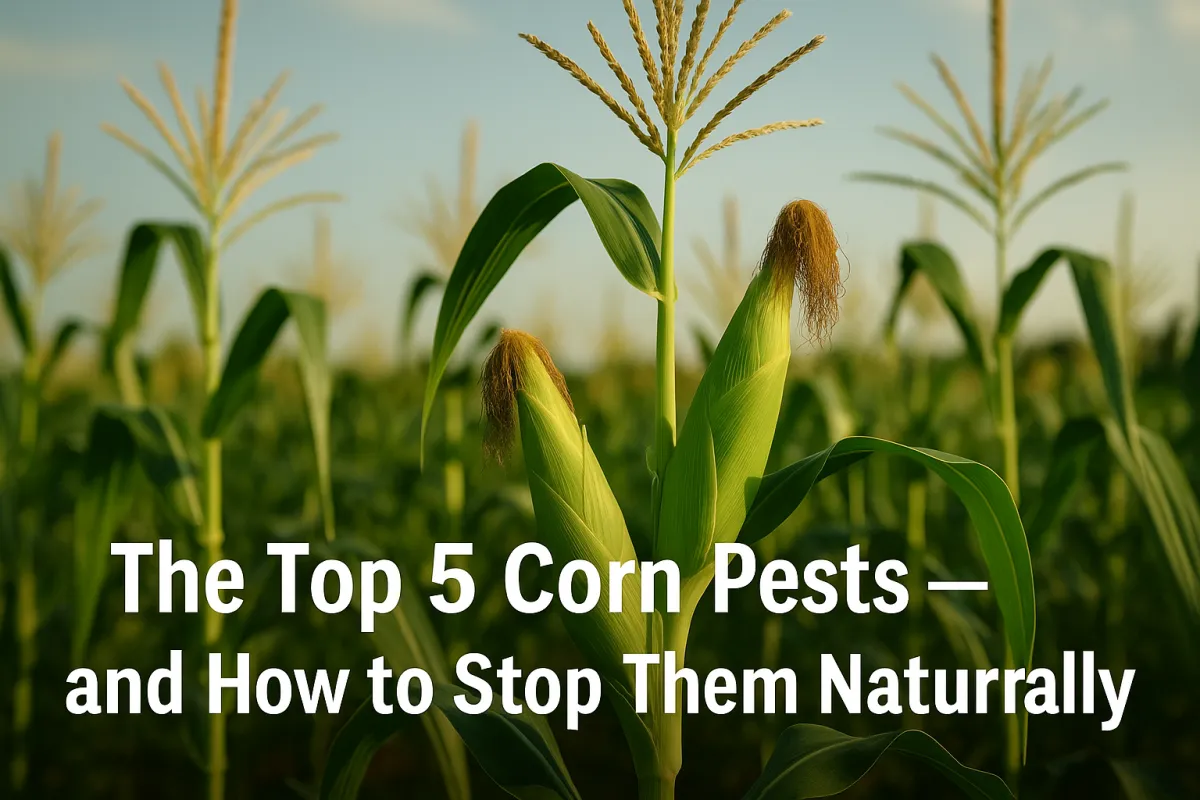
The Top 5 Corn Pests (and What to Do About Them Naturally)
The Top 5 Corn Pests (and What to Do About Them Naturally)
I still remember the summer I first planted sweet corn on this homestead. It felt like the final mark of real independence—rows of green stalks waving in the breeze, promising ears I could roast right on the coals.
But by mid-July, I found myself cursing under my breath. Corn earworms had chewed through half the crop. A few nights later, raccoons rolled through like they owned the place. If you’ve grown corn, you know exactly what I’m talking about.
Truth is, corn draws a crowd—pests love it as much as we do. But if you know the signs and stay ahead of them, you’ll still fill your pantry. Let me show you the top problems and the old-school ways I tackle them here, so you can do the same.
Start Strong: Healthy Soil, Rotation & Zone Smarts
Grandma always said: “Bad ground grows bad bugs.” It’s simple. If your soil’s weak and you plant corn in the same spot year after year, pests move in like it’s free rent.
Rotate your beds: Never plant corn in the same place two years running.
Feed your soil: Compost, manure, even a light cover crop in fall will pay off.
Know your zone: Longer warm seasons (like Zones 7-8) mean more earworm and aphid generations. Short seasons in Zones 4-5 often dodge the worst of it.
Healthy plants can take a hit and keep going. Stressed ones? Not so much.
Corn Earworms
This is the classic heartbreaker. Earworms show up when tassels start dropping pollen and silks push out. They chew through silks, burrow into ear tips, and leave brown mushy messes.
Spot it early:
Frayed, chewed silks
Tip ends messy or moldy
Blackish droppings (frass)
Natural fixes:
Mineral oil: Put 3-5 drops right on each silk where it emerges. The oil gums up the larvae.
Bt (Bacillus thuringiensis): Safe organic spray timed just as silks appear.
Harvest fast: Once ears firm up, pick them. Waiting “just a little longer” is how you lose them.
Cutworms
Cutworms hit early, usually at night. You’ll walk out one morning to find young stalks sliced clean at the base. Nothing’s worse than baby corn flopped over in the dirt.
Stop them cold:
Collars: Wrap seedlings with cardboard strips or toilet paper tubes pushed an inch into the soil.
Weed well: Cutworms hide in weeds and grass.
Call in the birds: Robins and wrens feast on these pests. Toads help too.
Aphids on Tassels
Aphids are tiny green or black sap-suckers that show up on tassels. They drip sticky honeydew, which ants farm and protect. You’ll see lines of ants marching up and down the stalks.
Why it matters:
Can mess with pollination.
Leads to sooty mold on tassels.
Handle it naturally:
Blast with water: Hit tassels in the morning before the heat rises.
Attract beneficials: Ladybugs and lacewings love aphids. Plant dill or fennel nearby to draw them in.
Break up ant trails: Sprinkle cinnamon or diatomaceous earth around bases to slow ants down.
Raccoons & Deer: The Midnight Bandits
Nothing tests your patience quite like raccoons. They know exactly when corn is ripe. Deer? They’ll stroll in like gentle giants and nibble down half your patch.
What I do:
Raccoons:
Electric fencing is hands-down the best if you’re serious.
Motion lights or leaving a radio on low overnight can help short term.
Deer:
A tangled mass of squash vines at the corn’s base confuses them.
Harvest as soon as ears firm up. Don’t hold out for perfection.
Companion Planting & Confusion Tactics
Corn loves company—and the right neighbors pull double duty as pest defense.
Squash: Broad, prickly leaves discourage raccoons and deer.
Beans: Climb the corn, fix nitrogen, make it harder for pests to navigate.
Mint & basil: Mild help on aphids. Just don’t let mint take over—keep it in pots.
Grandma always said, “It’s never just one thing. Mix it up, keep ‘em guessing.”
Quick Troubleshooting Table
SymptomLikely PestTry ThisCut stalks at groundCutwormsCollars, weed well, evening patrolChewed silks, messy tipsEarwormsMineral oil, Bt, early harvestSticky tassels, ants runningAphidsHose off, attract ladybugs, limit antsStripped ears, half patch goneRaccoonsElectric fencing, lights, quick harvestNibbled tops, hoof printsDeerSquash vines, fencing, early pick
A Few Final Notes from Grandma
Grandma used to lean on her hoe and say, “Healthy plants fight back better. Stewardship’s a long game. Do your part, trust God with the rest.”
Couldn’t agree more. Keep your soil strong, rotate wisely, watch daily, and you’ll beat most problems before they start.
Your Natural Corn Defense Checklist
✔️ Rotate corn beds every year
✔️ Build soil with compost & manure
✔️ Use collars on seedlings for cutworms
✔️ Drop mineral oil on silks early
✔️ Encourage ladybugs, lacewings, birds
✔️ Plant squash & beans with your corn
✔️ Harvest promptly—don’t wait too long


Facebook
Instagram
X
Youtube